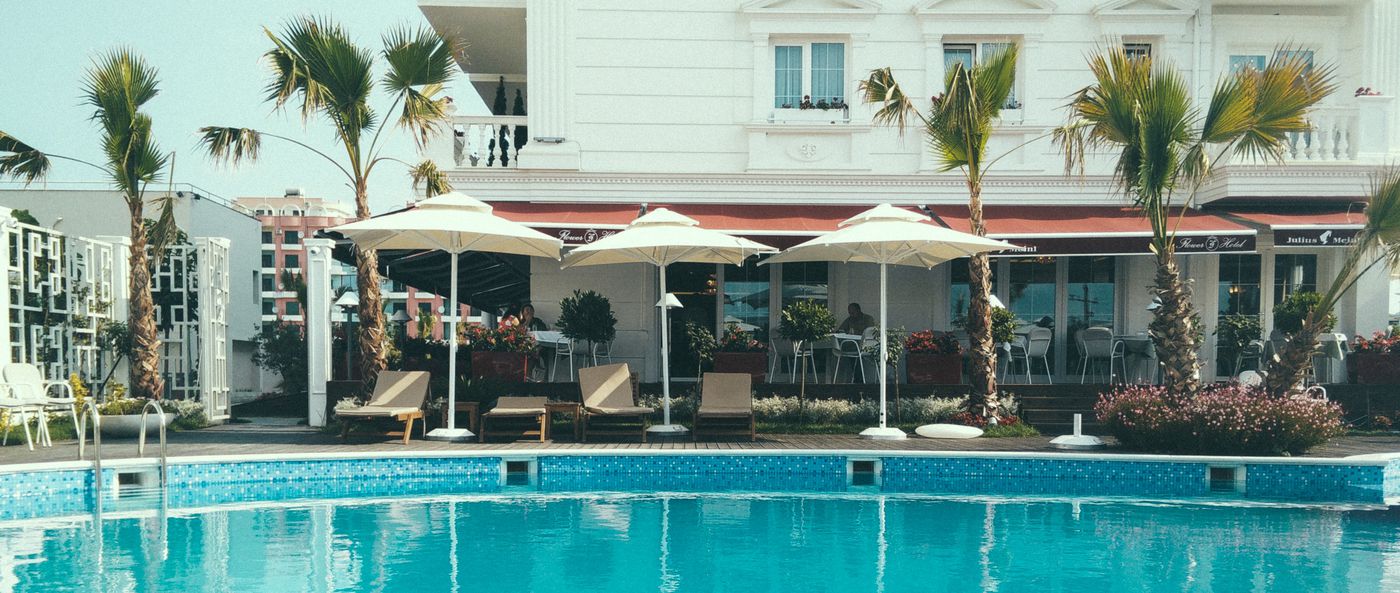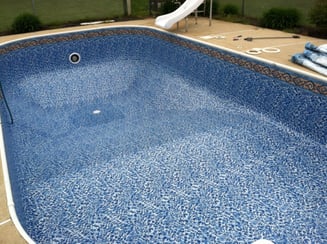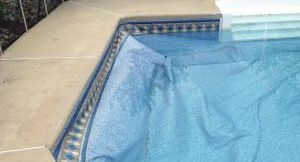Top 5 Vinyl Liner Pool Problems and Solutions
February 18th, 2010
4 min read

Vinyl liner swimming pools make up a significant portion of the swimming pool market in the United States, with a very large majority built in the Northeastern segment of the country.
Often when someone is considering the purchase of such a pool, they are confronted with a few important decisions regarding some potential issues and problems that come with this structure.
This article will explain some of these issues as well as the corresponding remedies.
Top 5 problems with vinyl liner pools
- Ugly steps and benches
- Ugly coping
- Metal vs. polymer walls
- Liner longevity
- Floating liner
Problem #1: Ugly Steps/Benches
The main problem with vinyl liner pools comes down to their aesthetics. Many consumers complain that they look cheap, and the honest answer is that this is true in most cases.
This is also why much of this article will focus on ways to prevent a liner pool from looking cheap. There are certainly steps (as well as some great vinyl pool builders in the industry) that can help alleviate this problem.
In most cases, the steps and benches of vinyl liner pools are made of white plastic. It's structurally sound, but the bright white typically doesn't match well with a colored liner.
To make things worse, these benches and steps also have a 3–4 inch wide 'lip' that is flush with the top of the patio, making them conspicuous from all angles. Not the best thing to look at after investing big bucks into a lovely patio.
Solution
Recently, more and more builders have started using what's known as the 'vinyl over step' method.
The steps and benches of the pool are integrated into the wall panel structure and covered with the vinyl liner.
Although this method is quite a bit more expensive, it brings uniformity to the color scheme of the pool and looks much, much better.
Problem #2: Ugly Coping
In the majority of liner pools, the coping consists of an aluminum C-track.
The reason why this track is so commonly used is because it is easy to install and certainly easy to pour concrete up to.
But the problem with it is that it creates a white rim all the way around the pool's edge.
This looks especially bad if someone is pouring any type of colored or stamped patio around their pool, as the color clash is quite noticeable and again deters from the entire look of the project.
Solution
There are two main alternatives to ugly aluminum coping on a liner pool.
The first is by pouring a cantilever concrete edge. Although this technique is difficult, the aesthetic difference is night and day when you compare it to the aluminum coping.
Another alternative is a brick or paver coping. Again, this is much more expensive but certainly looks exceptional and will greatly enhance the look of the swimming pool.
Problem #3: Metal vs. Polymer Walls
Originally, all vinyl liner pool structures were made of wood. As you can imagine, this was not the best long-term solution for a pool structure in your back yard.
With the average lifespan of wood being 10–15 years, manufacturers started producing metal walls instead, namely galvanized steel panels. These steel panels were a major upgrade from wood, much stronger, and are still used today by many manufacturers.
But as we all know, metal is metal, and no matter how galvanized it is, it can oxidize over time under the ground. This is especially true with the surge in salt water pools around the world.
Every vinyl liner will experience at some point a leak behind the liner itself. Translation: pool water is making contact with the pool's panel structure. These leaks and drips usually start in the places the liner has been cut—return fittings, skimmers, etc., are the main problem areas.
And how does a metal panel react to constant exposure with salt water over time? Yep, it rusts.
In fact, the panel can oxidize all the way through, which is a major, major problem and repair.
Solution
Many vinyl liner companies are now using polymer wall panels as the pool's structure.
This is a very smart method of construction because these panels will not oxidize over time and are unaffected by salt.
In fact, I've seen many cases where a vinyl liner was getting replaced and the polymer panels looked brand new, even though they were over 20 years old.

Problem #4: Liner Longevity
Obviously, the biggest concern most pool consumers have when considering a vinyl liner is the longevity of the liner.
This is understandable because the average vinyl liner replacement typically costs $3–6k when you consider labor, liner, and water.
The average lifespan for a vinyl liner is 5-9 years, but there are certainly cases where they will last less than 5 years or more than 15.
In fact, the biggest factor that dictates the longevity of a vinyl liner in many cases is luck, although you can take certain measures to increase the longevity of the pool's liner.
Solution
Although I could spend quite a bit of time discussing ways to increase the lifespan of a pool's liner, I'll just briefly mention these three:
- Proper maintenance of water chemistry (pH, alkalinity, etc.).
- Proper installation of the liner by the builder. Most people overlook this important fact.
- Type of water sanitizer. High levels of chlorine (shock) are tough on a liner, which is why salt sytems and non-chlorine systems are much easier on the liner's longevity.
Problem #5: Floating Liner
In areas with high water tables, the water pressure under the pool can actually cause the liner to float.
When this occurs, the liner looks like it's actually inflated, and feels like a water bed when walking on it.
In most cases this incident does not damage the liner, but it normally results in wrinkles in the liner after the ground water recedes and the liner falls back into place.
Solution
To fix the ground water issue
Install a dewatering system around the pool that will keep the ground water around the pool to a minimum.
This will obviously keep the liner from floating again.
To remove the wrinkles in the liner
Drain the pool and re-set the liner.
But this is a slippery slope. If the ground water is still there, this will turn into a big mess.
It should also be stated that liners more than 3 or 4 years old dry, shrink, and become rigid VERY QUICKLY. So I would not recommend this process to anyone without experience working with vinyl liners.

So those are 5 common vinyl liner pool problems and solutions. We hope these recommendations will set you on the right path if you have decided to purchase this type of pool. Also, if you'd like, you can read further articles comparing vinyl, concrete, and fiberglass pools and download our free ebook.
Questions? Comments? Please don't hesitate to leave your thoughts below.
Up Next:
Vinyl Liner Pool Basics: Pros, Cons, and How They’re Made
Vinyl Liner Pools vs. Fiberglass Pools: An Honest Comparison
Editor's note: This blog article was updated on August 27, 2018.
Marcus Sheridan is a co-founder of River Pools® Virginia and a leading voice in the fiberglass pool industry, known nationally for his commitment to educating homeowners about inground pools. Over the past two decades, Marcus has helped thousands of families confidently navigate the pool buying process with transparency and trust. His straightforward, educational approach has helped make River Pools a go-to resource for fiberglass pool buyers across the country. When he’s not writing or speaking about pools, Marcus helps businesses embrace honest communication to better serve their customers.

